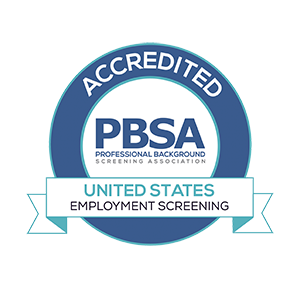Conducting investigations in Human Resources is a skill that must be developed in order to keep the operation running smoothly. Investigations vary from accidents, sexual harassment, discrimination, to employee conflict.
Having an understanding of how to conducting investigations and background checks will lead to fewer issues down the line. This is particularly the case if an attorney is hired by an employee. The following are six things to keep in mind while conducting an investigation. Indeed, to conduct a thorough and fair investigation to help protect the employees’ rights while at the same time protecting the organization from a potential lawsuit.
1. Stay Neutral
As an HR professional, it is your job to remain neutral at all times. You must cast aside your judgments to remain as fair as possible. It is a good idea to have a healthy balance amongst management and employees so that you are not accused of favoritism. You are the mediator and the person to offer a solution to the conflict you are faced with. The investigation must be handled as swiftly and as confidentially as possible.
2. Meet With All Parties Involved
Schedule time to meet with all parties involved. These include complainant, accused, and witnesses. Start your meetings by informing the employee that the information they provide will remain confidential on an as needed basis. Let them know that only those who need to know will know about the situation. Also, inform the employee that you will be taking notes for accuracy purposes. Remember, you are not there to judge the situation so avoid making facial expressions as the employee speaks. Observe their body language, make eye contact to acknowledge you are listening as often as possible, and take very good notes.
3. Gather and Organize All Information
Once you have gathered all of the information cross check your notes & statements for inconsistencies in stories. If there are inconsistencies (which are common) now is the time to get Asset Protection. Asset Protection can help to determine if there was any video captured where the incident took place. When there is solid footage, the video will make conducting an investigation even easier. If not, this is where your solid judgment skills come in. This is where you use sound decision to conclude your investigation.
- Go back and review notes, statements.
- Speak to anyone you previously spoke with to clarify any questions you might have
- Take notes on or recall body language
- Determine who has more credibility
- And review employee files to better understand the individual
4. Make a Decision
At this time you are ready to make your recommendations based on your findings. While conducting investigations, HR professionals face common gaps in information needed to conclude what really happened.
If this is the case, again, you will have to use your best judgment to offer a sound recommendation in line with your organization policies and procedures. What does the complainant want to see happen? Perhaps in your investigation, you concluded there is some truth to the complainer’s story and they simply want an apology. Other times, the information will be clear and all you will have to do is refer to your company policy and make your recommendation based on the policy.
5. Follow Through
Once a decision has been determined it is important that you follow through with the complainant to let them know the investigation has been concluded. You don’t have to divulge all the details of the investigation, but do assure them you handled accordingly. Ask the employee if they are satisfied with how everything was handled. If they are not, try to determine what is causing their dissatisfaction and handle accordingly. Assuming the information they provided concluded truth, let them know to make you aware right away if any other incidents occur. If there is a warning to be issued follow through with the manager to ensure it was issued.
6. Save Everything
Save everything from the investigation, this includes e-mails, texts, notes from meeting discussions, statements, videos, pictures, etc. All of this information will help you and the management team recall who, how, and when the investigation was handled. The information will also show that you did your due diligence in investigating and offered a fair solution accordingly.











Leave a Reply
Want to join the discussion?Feel free to contribute!